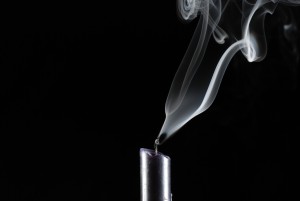Smoke
Indoor smoke pollution is harmful in a variety of ways. Second-hand smoke is a combination of exhaled smoke and the smoke produced by an idling cigarette, cigar or pipe. It consists of solid particles, liquids and gases. It is a pollutant that you can easily control in your home by not allowing people to smoke indoors. Smoking indoors introduces 200 known poisons, such as formaldehyde and carbon monoxide, and at least 60 chemicals known to cause cancer. The smoke particles carry a foul odour that permeates all the fabric in an indoor environment such as carpets, furniture, drapery, and clothing. Smoke gets absorbed into paint and finishes changing the colour of the walls and furniture. Second-hand smoke is a major indoor pollutant that can results in the death of many non-smokers , specially in children and the aged.
Sources of Smoke:
Sources of smoke pollution come from wood burning stoves, fireplaces, oil lamps, and cooking. The most harmful sources of smoke pollution come from tobacco products and other narcotics.
Harmful Effects of Smoke:
Tobacco smoking, passive smoking, and indoor air pollution from biomass fuels have been implicated as risk factors for tuberculosis (TB) infection, disease, and death. Passive smoking is a cause for lung cancer, heart attacks, stroke, pneumonia, ear infections, asthma attacks, and other respiratory diseases.


